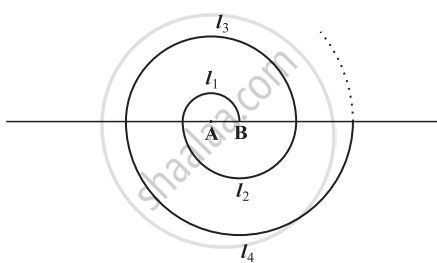Advertisements
Advertisements
प्रश्न
Choose the correct alternative answer for the following question .
What is the sum of the first 30 natural numbers ?
विकल्प
464
465
462
461
उत्तर
The given series is 1 + 2 + 3 + ... + 30
Here,
a = 1
d = 1
n = 30
\[S_n = \frac{n}{2}\left( 2a + \left( n - 1 \right)d \right)\]
\[ S_{30} = \frac{30}{2}\left( 2a + \left( 30 - 1 \right)d \right)\]
\[ = \frac{30}{2}\left( 2\left( 1 \right) + 29\left( 1 \right) \right)\]
\[ = 15\left( 2 + 29 \right)\]
\[ = 15 \times 31\]
\[ = 465\]
APPEARS IN
संबंधित प्रश्न
The houses in a row numbered consecutively from 1 to 49. Show that there exists a value of x such that sum of numbers of houses preceding the house numbered x is equal to sum of the numbers of houses following x.
Check whether -150 is a term of the A.P. 11, 8, 5, 2, ....
In an AP given d = 5, S9 = 75, find a and a9.
A spiral is made up of successive semicircles, with centres alternately at A and B, starting with centre at A of radii 0.5, 1.0 cm, 1.5 cm, 2.0 cm, .... as shown in figure. What is the total length of such a spiral made up of thirteen consecutive semicircles? (Take `pi = 22/7`)

[Hint: Length of successive semicircles is l1, l2, l3, l4, ... with centres at A, B, A, B, ... respectively.]
Find the sum of the following arithmetic progressions:
41, 36, 31, ... to 12 terms
Find the middle term of the AP 6, 13, 20, …., 216.
Find the 6th term form the end of the AP 17, 14, 11, ……, (-40).
The 9th term of an AP is -32 and the sum of its 11th and 13th terms is -94. Find the common difference of the AP.
Choose the correct alternative answer for the following question .
If for any A.P. d = 5 then t18 – t13 = ....
The first and the last terms of an A.P. are 8 and 350 respectively. If its common difference is 9, how many terms are there and what is their sum?
In an A.P. the first term is 8, nth term is 33 and the sum to first n terms is 123. Find n and d, the common differences.
Write the nth term of an A.P. the sum of whose n terms is Sn.
The number of terms of the A.P. 3, 7, 11, 15, ... to be taken so that the sum is 406 is
Q.7
Find the common difference of an A.P. whose first term is 5 and the sum of first four terms is half the sum of next four terms.
In an A.P. a = 2 and d = 3, then find S12
Find the sum of those integers from 1 to 500 which are multiples of 2 as well as of 5.
If the first term of an A.P. is 5, the last term is 15 and the sum of first n terms is 30, then find the value of n.
The sum of 41 terms of an A.P. with middle term 40 is ______.
k + 2, 2k + 7 and 4k + 12 are the first three terms of an A.P. The first term of this A.P. is ______.
